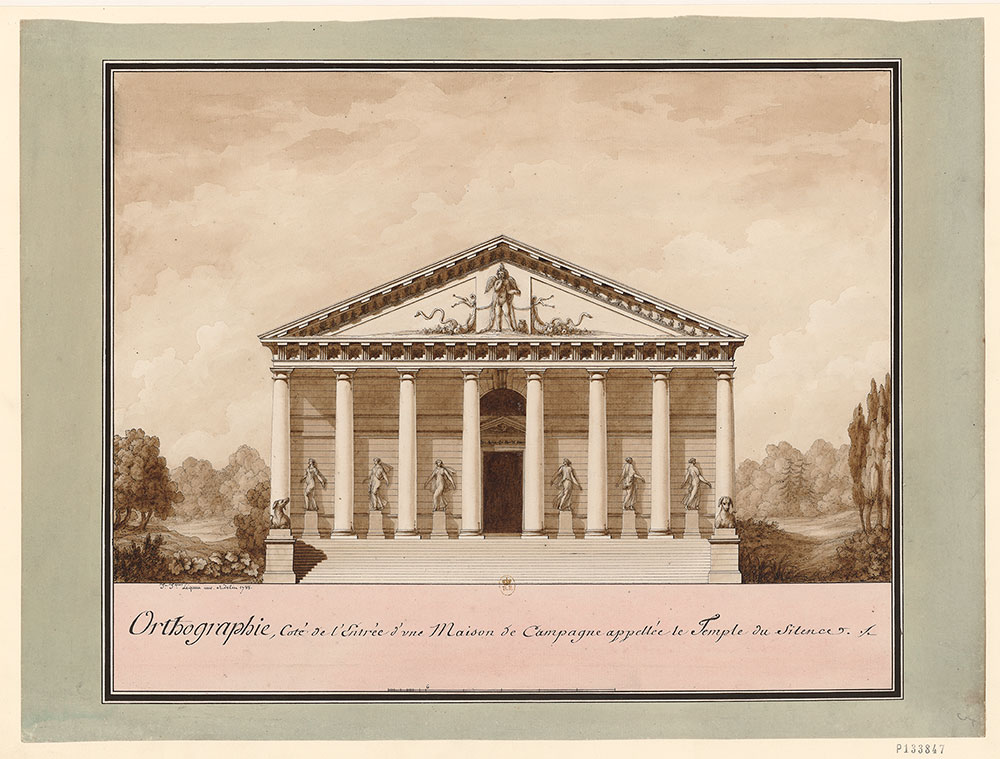
In an effort to establish his architectural career, Lequeu courted aristocratic clients with designs for country residences in the waning moments of the ancien régime. Construction began on a villa in Rouen for one patron, Louis-Jacques Grossin, comte de Bouville, but the project was halted by the revolution and the count’s flight from France. That this intimate villa was conceived as a Temple of Silence is indicated by the figure of Harpocrates, the Hellenistic god of secrets, in the tympanum. The design was included in an 1813 publication on civil architecture by Lequeu’s friend Jean-Charles Krafft, suggesting contemporary awareness of the artist’s work.
Jean-Jacques Lequeu (1757–1826)
Façade of a Pleasure Palace, Called the Temple of Silence, 1788
Pen and black ink, brown wash, watercolor
Bibliothèque nationale de France, Departement des Estampes et de la photographie
